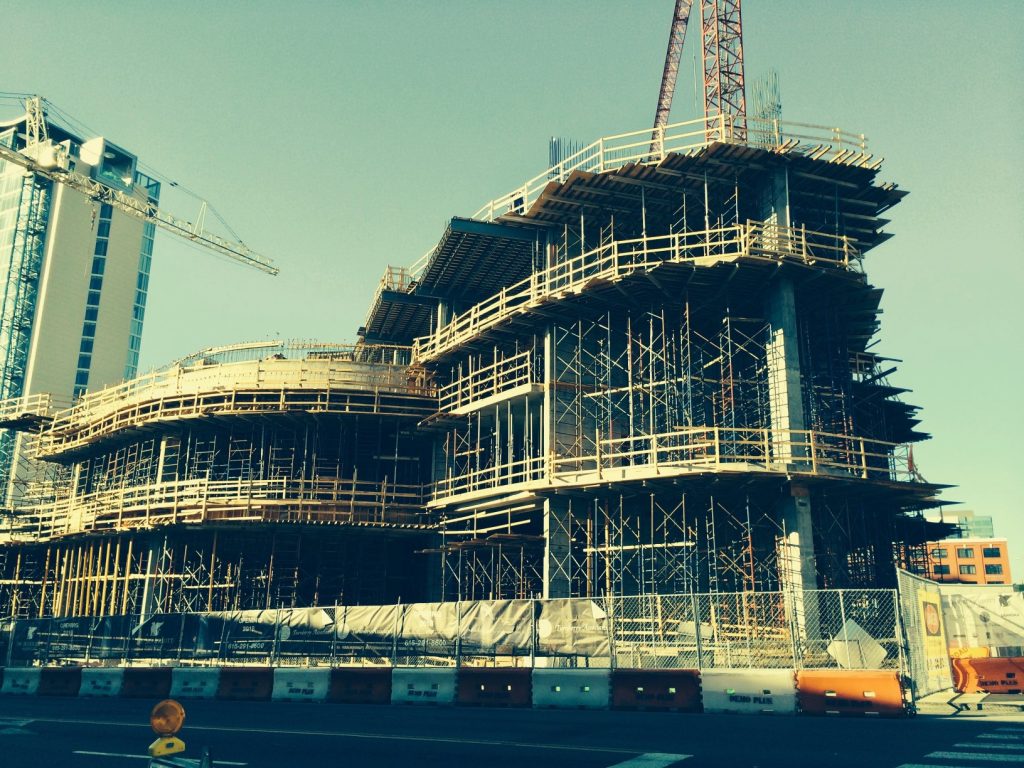Overcoming the difficulty of fastening into hard concrete – A recent example
There are a variety of factors that determine the success rate you can expect, when shooting a pin directly into hard concrete. More and more frequently we are seeing pre-cast and high PSI concrete, which increases the difficulty of attaching your fixture with success. In order to determine the correct fastener, sometimes it is worth testing a couple of options on the jobsite to compare results. Our experience has been that each job is entirely different and you cannot know anything for sure until you try.
The best way to illustrate this is with a recent example. There is a high-rise currently in Nashville called the JW Marriott. It is a 30+ story hotel located between the Gulch and Downtown Nashville, at the corner of Demonbreun and 8th Avenue South. This job had extremely hard concrete, particularly on the bottom side of each floor, where the rocks will sometimes settle in the concrete. Our drywall customer was trying Ramset old-style Trakfast pins, and Hilti GX Gas Pins, but was getting 50% or less of the pins to stick on the top track they were installing.
They allowed me and a couple of very helpful representatives from ITW Ramset to come and test the job with a couple of problem-solving pins. We quickly found that the Ramset T3 was able to obtain over a 90% stick rate with the step-shank pin (T3034S). This pin is made exactly for this situation. It has what resembles a pilot point for the first 1/4″of the pin shank. The shank then expands to a larger diameter for the remaining length of the pin. It was clear that the hard concrete pin shot in the T3MAG was far superior to the older Trakfast or Hilti pin.
The Cost
Now, let’s look at the cost. The step-shank pin is about 2 cents more expensive than the standard 3/4″ concrete pin (T3034B). This does add up to $20 more per thousand shots. On a big job this can be considerable. But what about the cost of a 50% loss rate on the cheaper pin? If that pin is $80-90 per box and you lose 50%, you are losing $40-45 per box AND you are losing a lot of money on the labor. The installer is up on a ladder or scaffold holding a 14lb. tool overhead. If he is having to second guess each shot and shoot each section twice, the cost of the labor could far exceed the cost of the loss of pins.
On a high profile job such as this one, time is very valuable and scarce. It is important to be using the BEST fastener in the BEST tool for the application. A lot of people get very hung up on the most obvious detail, such as the cost of the cheapest fasteners VS. everything else. It is our job help our customers come up with the most effective and fastest method of attachment. We do this on a constant basis and enjoy seeing contractors confident in what they are doing, instead of just using a fastener by default.

Next time I will go over another common situation: Deciding the best fastener to use for ceiling wires. Thanks for reading!

